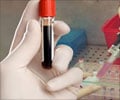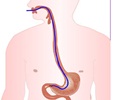Scientists have developed a method that avoids the hassle of multiple blood tests and can give out results in a single reading
Scientists have developed a method that avoids the hassle of multiple blood tests and can give out results in a single reading.
A single drop of blood could soon be able to identify various blood related metabolites-such as sugars, fatty acids, amino acids and other organic substances-from plant or animal tissue samples.Scientists at the Max Planck Institute for Chemical Ecology in Jena and their colleagues from the Czech Academy of Sciences in Prague have developed a new method to quickly and reliably detect metabolites from only a drop of blood.
Called MAILD, the new technique is based on the classical mass spectrometry (MALDI-TOF/MS), and it enables researchers to measure a large number of metabolites in biological samples.
Thus, the new method may pave the way for targeted and high-throughput metabolomics as well as in medical diagnostics.
Mass spectrometry is an analytical technique used to elucidate the molecular composition and structure of chemical compounds.
Matrix-Assisted Laser Desorption/Ionization (MALDI), wherein bio-molecules (e.g. proteins) are co-crystallized with a chemical substance called a matrix subsequently irradiated with a laser leads to the formation of protein ions, which can be analysed and detected.
Advertisement
"The ions that originated from conventional matrices were like a haystack in which we wanted to find a few and important needles," said Alee Svatoe, head of the mass spectrometry/proteomics research group at the Max Planck Institute.
Advertisement
In other words, they tried to remove the haystack to make the needles visible.
So the researchers used the Bronsted-Lowry acid-base theory, and formulated conditions for rational selection of matrices that did not generate interfering ions but provided rich mass spectra of particular kinds of metabolites in real samples.
And with the new experimental protocols they called "Matrix-Assisted Ionization/Laser Desorption - MAILD", the scientists could quickly and reliably determine more than 100 different analytes from single and small-sized samples.
The new MAILD method allows measurements from diverse biological and medical materials.
The technique allowed scientists to determine a wide range of blood-specific organic acids in one drop of human blood, smaller than a micro litre.
If the scientists succeed in not only identifying, but also quantifying the metabolites, MAILD could develop into a fast method for medical and biological diagnostics.
Source-ANI
RAS









